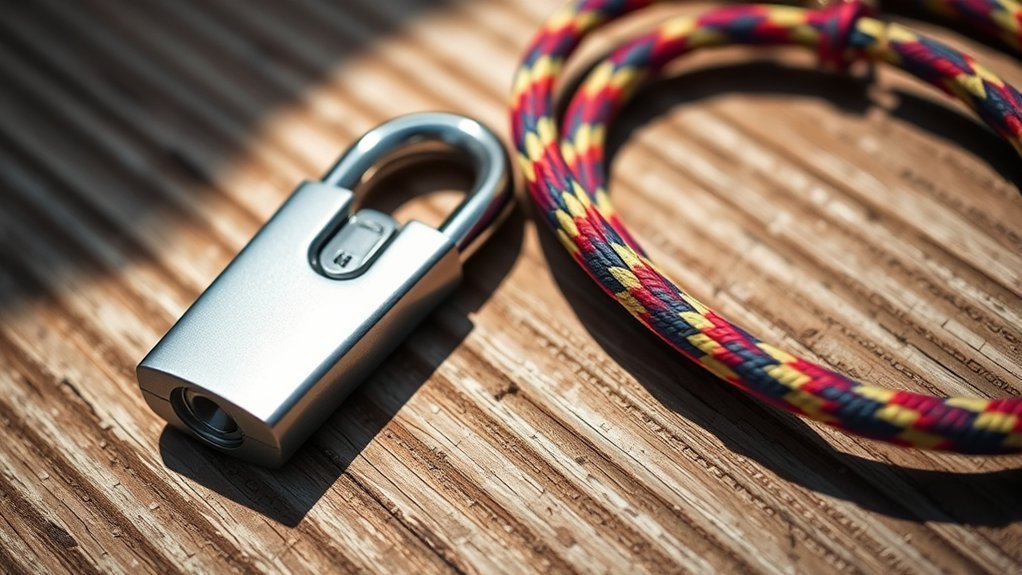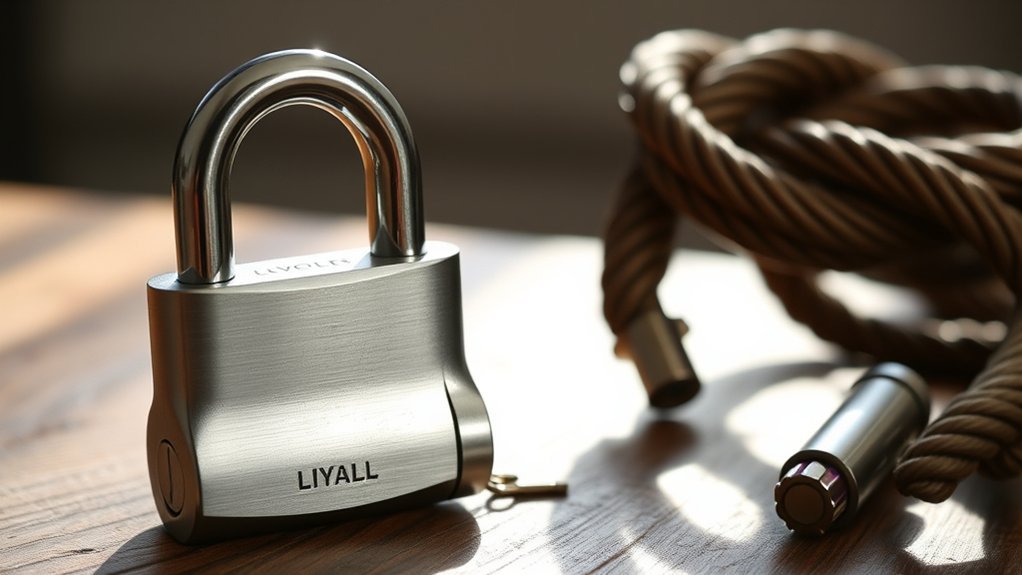Did you know that nearly 40% of firearm owners don’t secure their weapons properly? This raises critical questions about safety and accessibility when choosing between trigger locks and cable locks. Each option has unique advantages and potential drawbacks that impact both security and ease of use. So, which lock truly offers the best protection for your firearm? Let’s explore the functionalities and implications of both types.
Understanding Trigger Locks
Understanding trigger locks is essential for responsible firearm ownership. Trigger locks fit over a firearm’s trigger and trigger guard, effectively preventing the gun from being fired when properly installed on an unloaded weapon. Typically, these locks come in a two-piece design or as a large padlock that locks the action, available in keyed or combination options. While trigger locks are affordable and often included with firearm purchases, they’re seen more as a “feel good” security measure than a robust solution. Quick removal can aid in home defense but also introduces safety risks if not handled correctly. Using trigger locks on loaded firearms raises legal concerns, as they may not effectively prevent accidental discharges or unauthorized use.
The Functionality of Cable Locks

While trigger locks provide a basic level of security, cable locks offer a different approach to firearm safety by physically blocking access to the weapon’s mechanism. A cable lock consists of a flexible steel cable threaded through the firearm, ensuring it remains inoperable when locked back. These locks are designed for use with the action open, effectively preventing magazine insertion and blocking the action.
- They protect your firearm’s finish with rubber or nylon coverings.
- They’re an affordable and accessible security solution for firearm owners.
- They enhance safety for rifles and long guns, giving you peace of mind.
Incorporating a cable lock into your firearm safety routine can notably reduce the risk of unauthorized access and accidental discharge.
Pros and Cons of Each Lock Type

When choosing between trigger locks and cable locks, it is essential to weigh their respective advantages and disadvantages. Trigger locks are typically easier to remove quickly, making them convenient for home defense. However, they may not secure firearms against unauthorized access as effectively as cable locks. In contrast, cable locks guarantee your firearm’s action remains open and empty, preventing it from being fired. While trigger locks are more affordable and compatible with various firearms, cable locks can wear down a firearm’s finish over time. Both are considered basic security measures rather than foolproof solutions, as trigger locks can be tampered with and cable locks can be defeated with common tools. Ultimately, the choice depends on your specific needs and circumstances.
Legal Considerations and Compliance
Choosing the right locking mechanism for your firearm involves not only weighing the pros and cons but also considering the legal landscape surrounding firearm storage. In Massachusetts, both trigger locks and cable locks are permitted for storage, yet neither is legal for transport. Compliance with state regulations is essential.
Selecting the appropriate locking mechanism for your firearm is crucial, especially in light of Massachusetts’ specific storage regulations.
- Locks must effectively render firearms inoperable to unauthorized users.
- Key accessibility in trigger locks may jeopardize their effectiveness.
- Failing to properly engage locks can lead to liability issues.
When purchasing a handgun, make certain you buy a lock approved by the Massachusetts State Police. Meeting these legal compliance standards isn’t just about following the law; it’s about safeguarding lives and preventing unauthorized access to your firearm.
Alternative Security Measures for Firearms
As you explore alternative security measures for firearms, consider that effective storage solutions can greatly enhance safety while ensuring quick access in emergencies. Smart Code door locks can provide keyless access to gun storage areas, keeping unauthorized individuals out. Replacing door hardware with secure lever handles and deadbolts is a cost-effective way to safeguard firearms without bulky safes. Leaving safes open while securing room access allows for quick firearm retrieval when needed. For transport, portable lockable boxes and hard plastic cases are essential, offering a protective barrier against unauthorized access. Quick access safes are particularly beneficial, enabling immediate access to firearms while ensuring they remain secure when not in use, helping you maintain control over your trigger and trigger guard.
Conclusion
In choosing between trigger locks and cable locks, you need to weigh your priorities carefully. Imagine a scenario where you need quick access for home defense; a trigger lock might be your best bet. On the flip side, if preventing unauthorized use is your main concern, a cable lock could be the safer choice. Ultimately, envision your lifestyle and security needs, and select the lock that aligns best with your values and circumstances to guarantee responsible firearm ownership.

